How to use Focus to limit Notifications in iOS 16 and macOS Ventura
Posted on
by
Kirk McElhearn
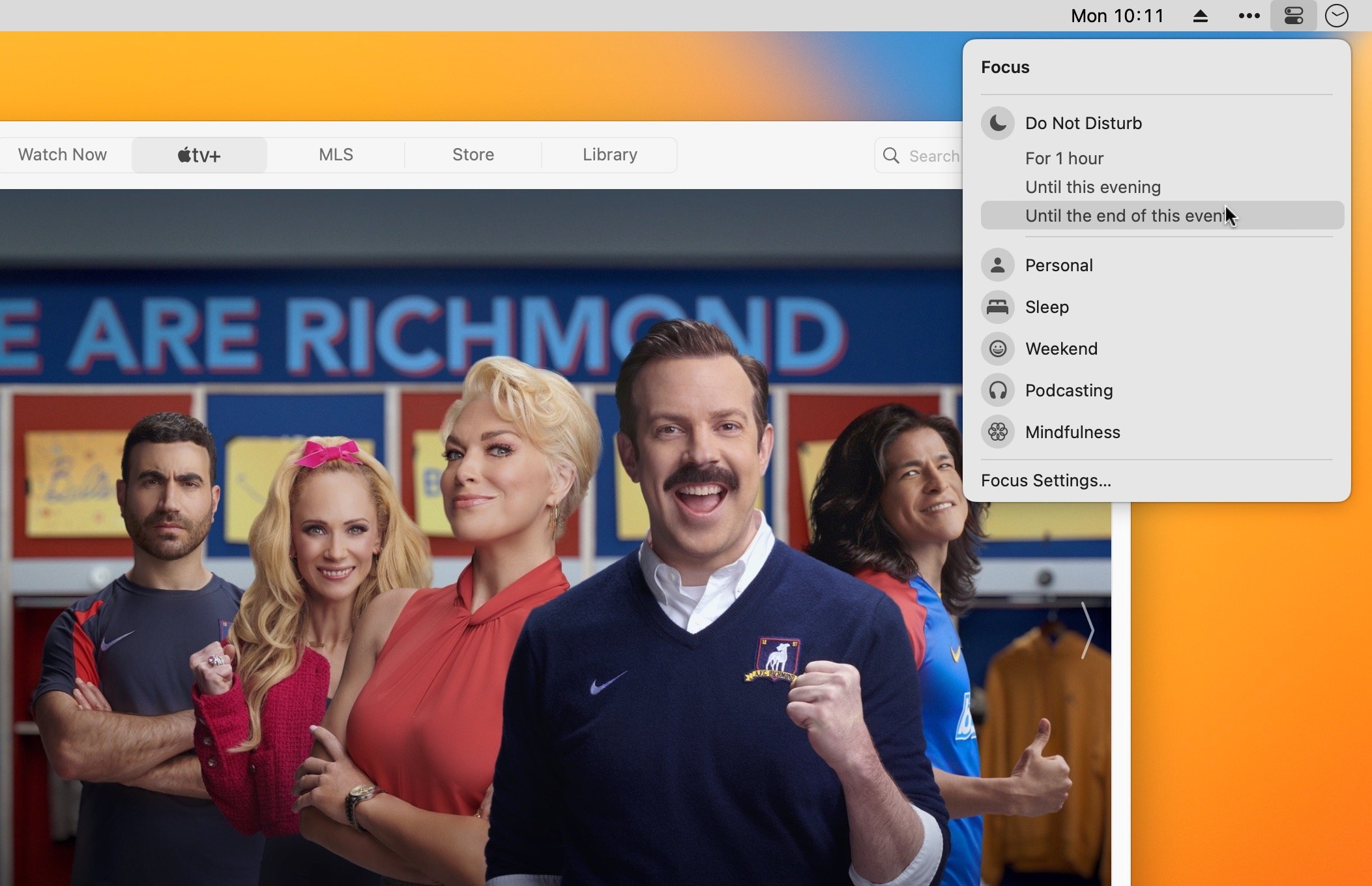
We get lots of notifications on our devices, and they can interrupt meetings, meals, and movies. It’s possible to pare down the notifications that you get, by turning off this feature for specific apps, but there are apps you may always want notifications from. You probably want to be notified when you receive phone calls, Face Time calls, messages, and when you get certain emails. If you’re at work, you may need to have notifications on if your company uses Slack, Microsoft Teams, or some other tool to communicate amongst employees.
Focus in iOS 16 and macOS Ventura lets you tailor notifications according to what you’re doing.
The idea behind Focus
The notifications you need to react to at work are very different from those you want when you’re out for dinner. You need to be able to get notifications about work-related tasks during working hours, whereas when you’re relaxing, you most likely want to turn off any apps that involve your job. When you’re exercising, you probably don’t want any notifications, though you may want to allow calls and messages from friends. And when you’re having family time, why not turn all notifications off, except, perhaps, calls or messages from your kids, telling you that it’s time to come pick them up?
If you have multiple Apple devices – an iPhone, Apple Watch, and a laptop, for example – it’s a hassle to have to turn Do Not Disturb on on each one, and remember to turn it off. So when you enable Focus, it can apply to all your devices.
How to use Focus
Focus settings are in Settings > Focus on the iPhone, iPad, and on the Mac. The settings are identical, and I’ll show you how they look on the Mac. Note that Focus modes also apply to the Apple Watch, though you can’t set them up on that device. You can enable Focus modes from your watch, and you can choose to mirror your iPhone’s Focus modes, or keep the watch’s Focus modes independent.
By default, there are six Focus modes: Do Not Disturb, Gaming, Mindfulness, Personal, Sleep, and Work; I’ve added my own Podcasting Focus settings.
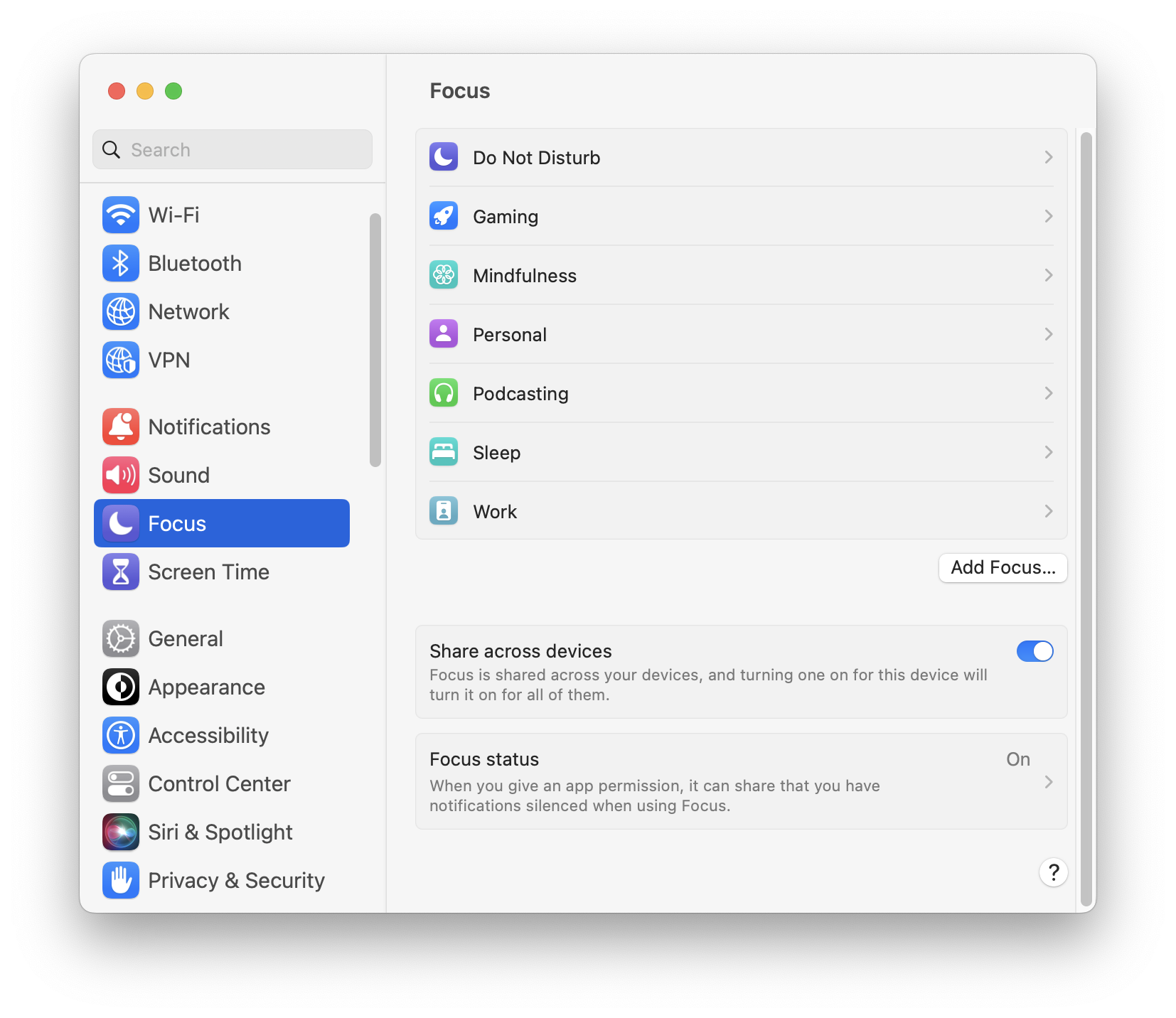
Since I’ve checked Share across devices, below the Focus list, my choices for Focus apply to all my devices. While this is practical, one limitation of Focus is that the sharing across device setting is all or nothing; you can’t have some settings apply to all devices, and others just to one or two devices. Though, as mentioned above, you can set your Apple Watch to not mirror your iPhone’s Focus settings, if you wish.
I have also enabled Focus status sharing. If you turn this on, when someone contacts you, using certain apps, they’ll get a reply saying that you’re busy. For example, you might want people to know when you’re using the Work or Sleep Focus modes, but not when you’re gaming.
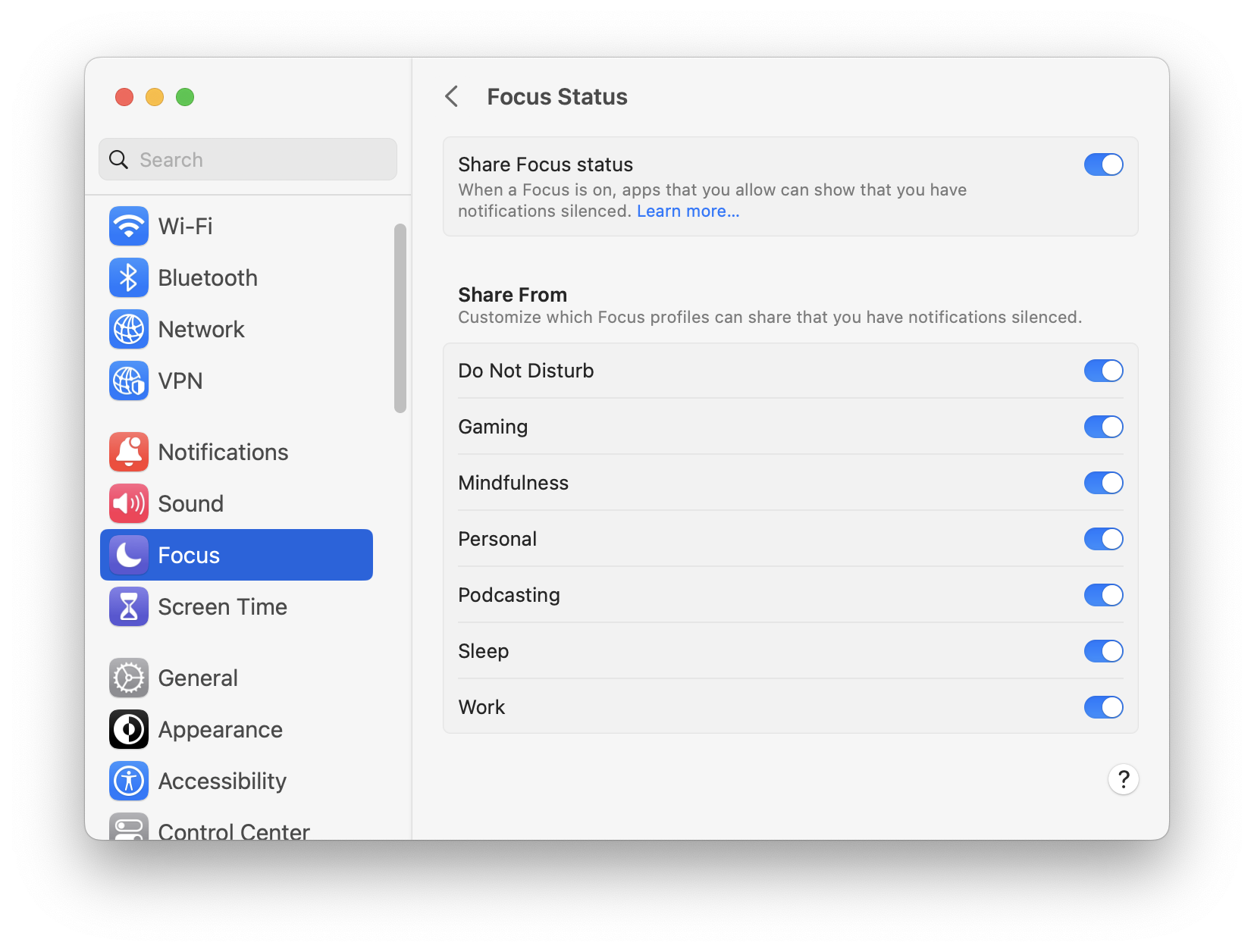
The main Focus many people will use is Do Not Disturb. You can enable this whenever you need some peace and quiet, but you can also schedule it, as you can schedule any of the Focus modes.
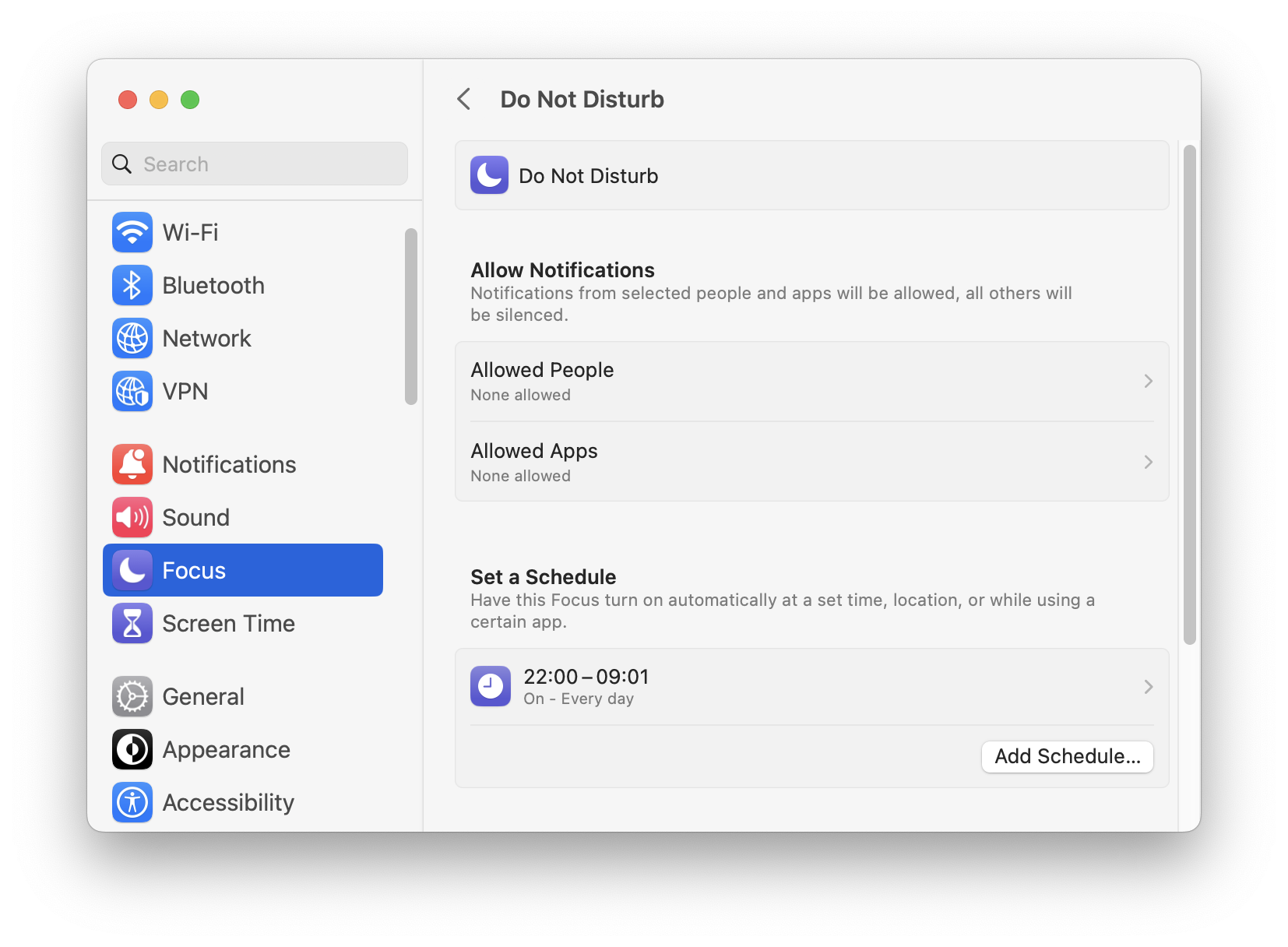
I have my Do Not Disturb Focus set to activate from 10 pm until 9:01 am. I chose one minute after nine so I don’t get awakened by all-day calendar notifications, which occur at 9 am, if I want to sleep late. You can set multiple notifications for a Focus mode. For example, you may want Do Not Disturb to activate when you’re eating lunch, and overnight; click Add Schedule to add one or more schedules for any Focus. Schedules can be based on time, location, or app.
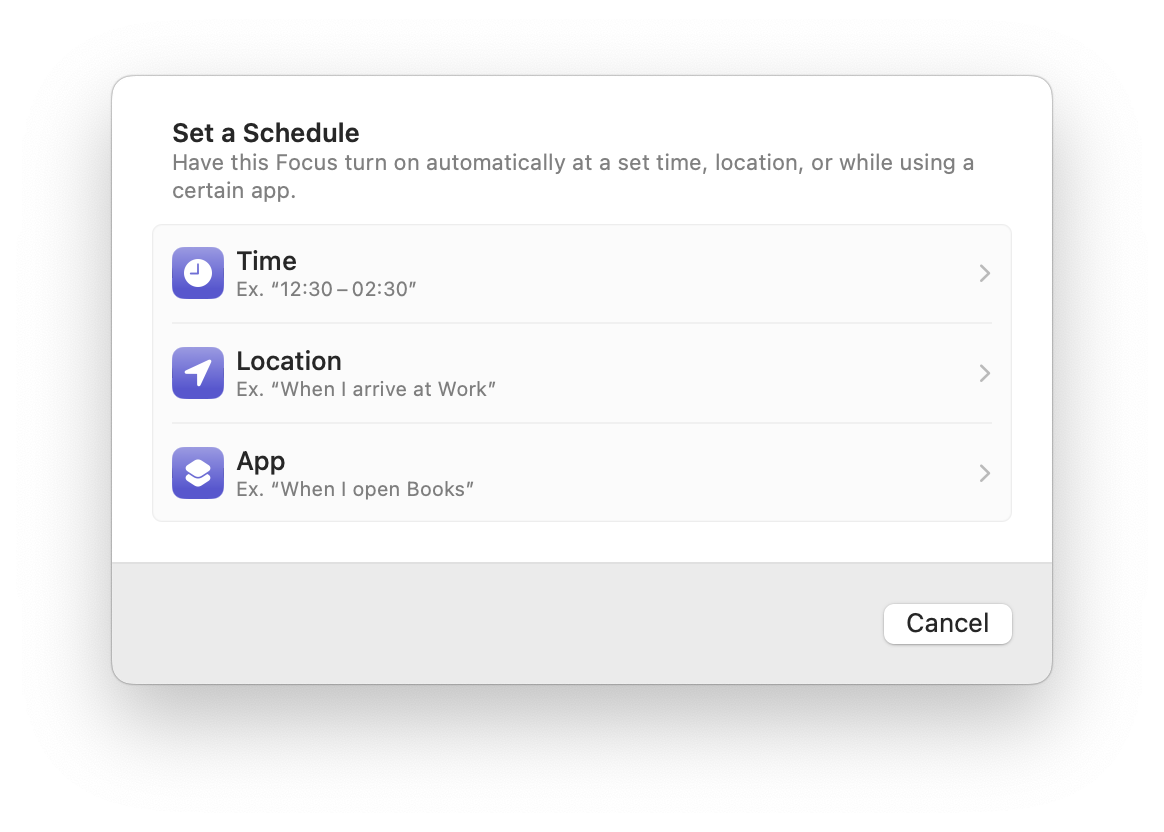
Time: If you want a Focus mode to activate at specific times, you can choose time periods and days.
Location: You can have Focus modes engage when you are at a certain location. Have your Personal Focus automatically turn on when you get home, or your Work focus engage when you get to the office.
App: When you launch a specific app, your Focus mode engages. For example, if you want to not be bothered when you’re on Face Time or Zoom calls, set up a Focus mode for that. Or if you don’t want to be bothered when you’re working in a specific app, such as when you’re editing photos or coding, create a Focus mode just for that app. However, this is impractical; if you switch away from that app, then the Focus turns off.
When any Focus is enabled, you can allow specific people and/or apps to override that Focus mode. Click Allowed People, and choose whose calls, texts, and emails get through the filter. Click Allowed Apps and choose which apps can send you notifications when the Focus is enabled.
For example, my Podcasting Focus allows the people with whom I podcast to be able to contact me; that’s so I get notified if they send me messages during a podcast. I have my Ring app allowed, so I get notified if someone rings my doorbell. You may have apps that aren’t on all your devices, so, when you set up Focus modes on, for example, your Mac, check any apps you might want to receive notifications from on your iPhone or iPad; I had to do this to add the Ring app.
Use Focus Filters
Focus Filters are a feature that tell certain apps to behave in specific ways. For example, you can set a Focus filter in your Personal or Weekend focus to not give you any notifications from your work account in Mail. You can turn off notifications from specific calendars in the Calendar app when you’re relaxing on the weekend. Or you can tell Safari to only display a specific tab group when you’ve turned on your Meeting focus.
Some third-party apps also support Focus Filters.
How to activate Focus
With a number of preset Focus modes, you can choose which one to use when you want to not be nagged by notifications. On iOS or iPadOS, swipe down from the top right of your screen to display Control Center, then tap the Focus icon. You’ll see buttons to apply any of your Focus modes. Tap the button to turn on Focus, or tap the … button to see options to turn on the Focus mode for 1 hour, until this evening, until you leave this location, or until the end of the current event, if you have one in your calendar.
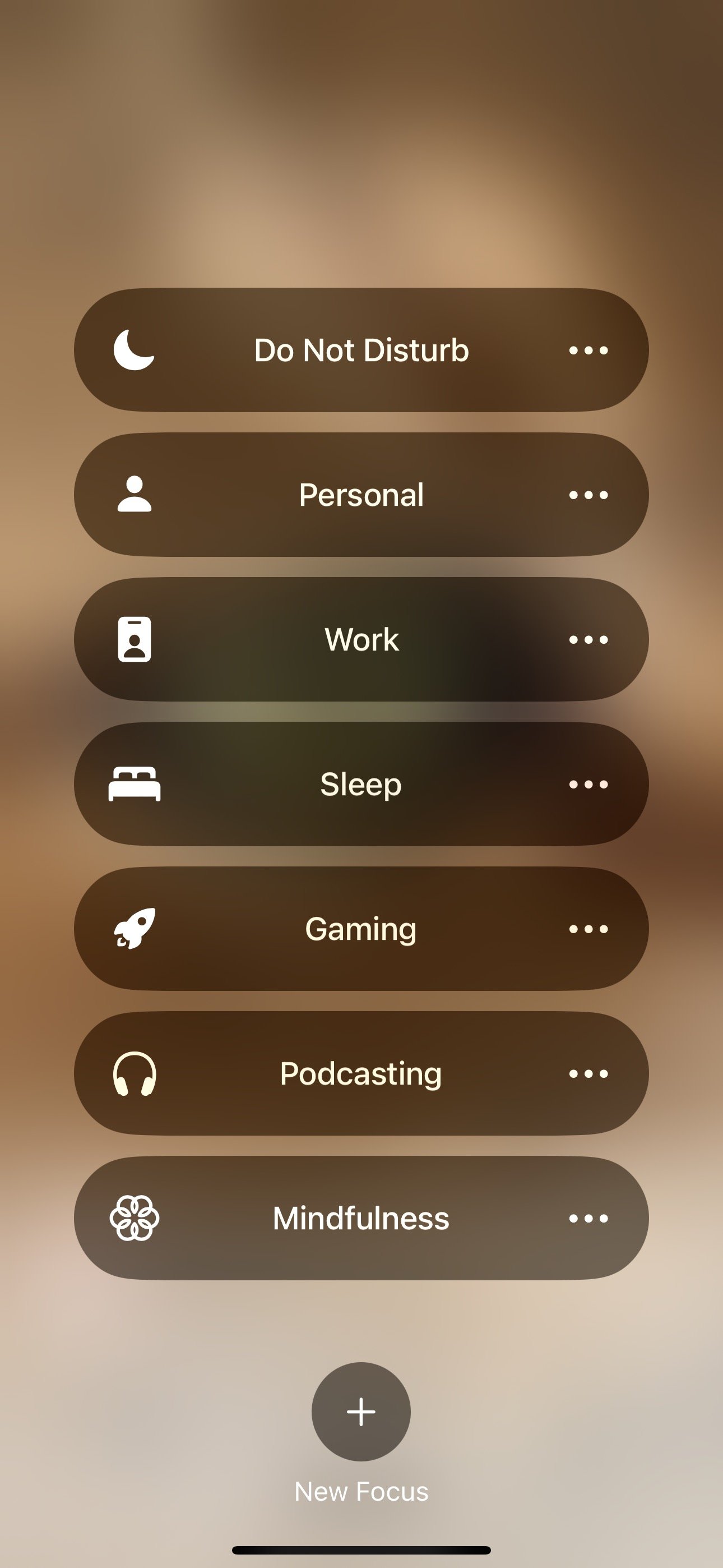
On Mac, click the Control Center icon in the menu bar, then click Focus, and choose one of the options. You can choose the basic, across-the-board Do Not Disturb, either until you turn it off, for one hour, or until this evening, or you can click one of your Focus modes to choose that.
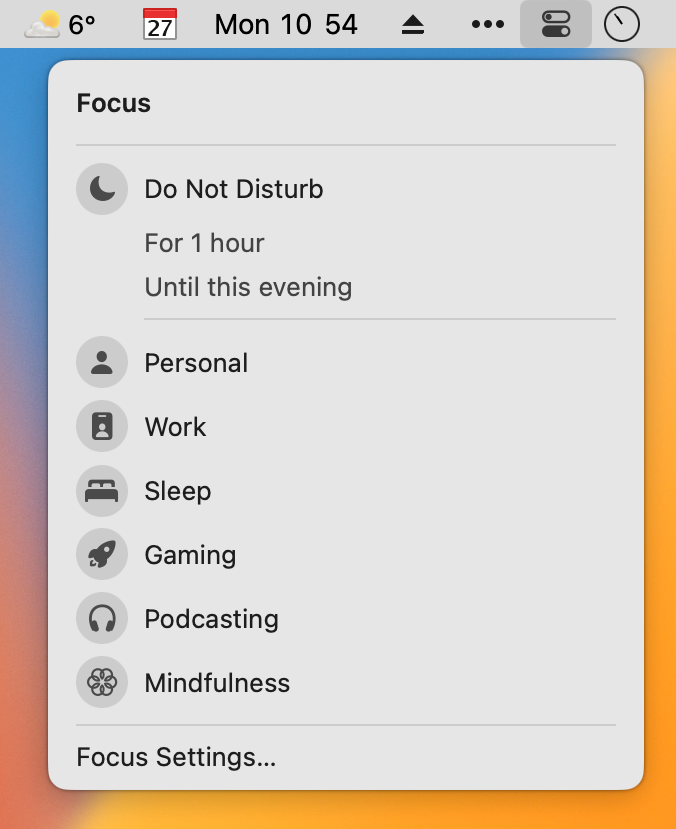
When you click a Focus mode, you’ll be able to turn it on for one hour or until this evening. If you do the latter, you can, of course, turn it off later. You don’t have the location-based option for Focus modes on Macs, even on laptops.
Additional Focus features on iPhone and iPad
Focus works the same on iPhone and iPad, and, as I mentioned above, you can have your Focus settings sync to your other devices. You may want to do this to not be bothered when you’ve engaged a Focus mode, or you may want different settings for each of your devices.
On the iPhone and iPad, you have additional options to customize lock screens, home screens, and an Apple Watch face. To do this, tap one of the screens, and choose what you’d like to see.
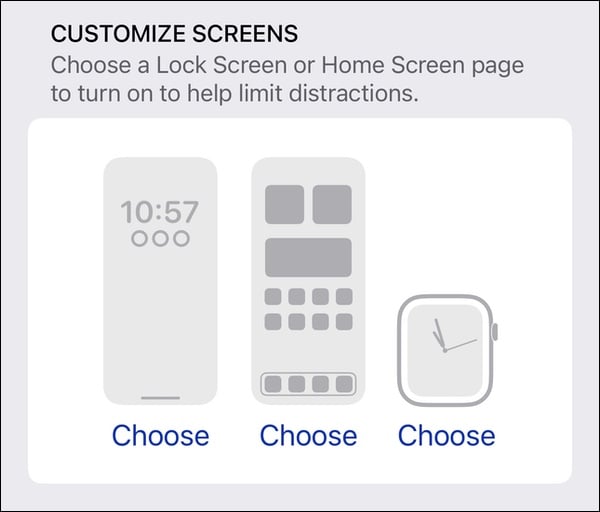
It’s worth noting that your device may suggest turning on Focus modes. For example, if you’re playing a game on your iPhone or iPad, you may see a banner on your screen offering to engage the Gaming focus mode.
Focus may seem a bit complicated at first, but as you get used to it, you’ll realize that it’s a practical way to limit notifications differently when you are doing different activities on your iPhone, iPad, or Mac. Take some time to consider how you can best use Focus, and don’t forget that you can tweak each of the Focus modes as you get used to the feature.
How can I learn more?
 Each week on the Intego Mac Podcast, Intego’s Mac security experts discuss the latest Apple news, including security and privacy stories, and offer practical advice on getting the most out of your Apple devices. Be sure to follow the podcast to make sure you don’t miss any episodes.
Each week on the Intego Mac Podcast, Intego’s Mac security experts discuss the latest Apple news, including security and privacy stories, and offer practical advice on getting the most out of your Apple devices. Be sure to follow the podcast to make sure you don’t miss any episodes.
You can also subscribe to our e-mail newsletter and keep an eye here on The Mac Security Blog for the latest Apple security and privacy news. And don’t forget to follow Intego on your favorite social media channels: ![]()
![]()
![]()
![]()
![]()
![]()
![]()